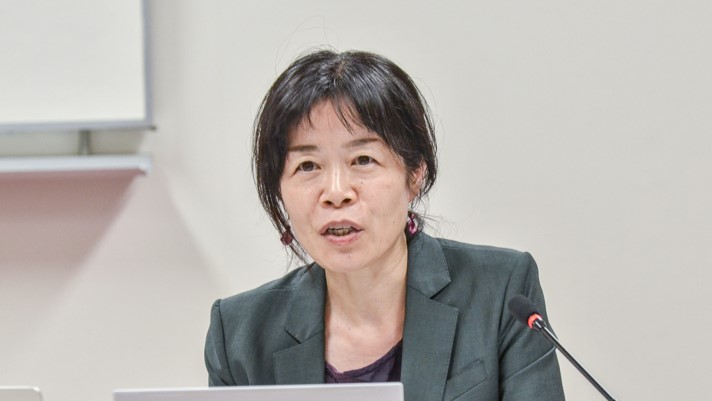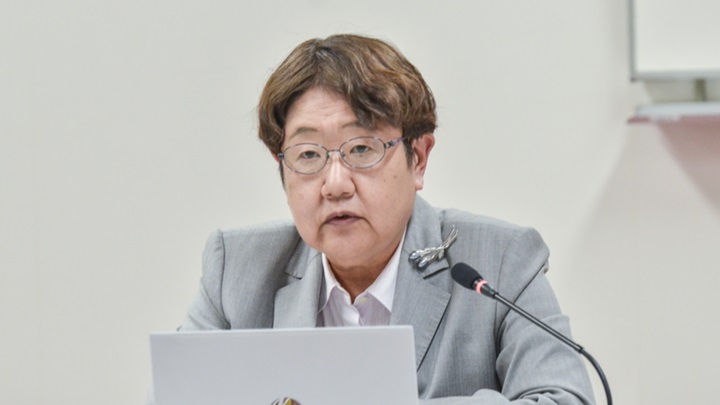Knowledge Forum Explores Japan’s Role in Advancing Human Security in Migration
2025.08.08
As global mobility accelerates under the pressure of conflict, economic inequality, and climate change, how can we ensure safe and secure corridors for all? On June 13, the JICA Ogata Sadako Research Institute for Peace and Development (JICA Ogata Research Institute) hosted a Knowledge Forum titled “Reconceptualizing ‘Human Mobility’ from a Human Security Perspective: What is ‘Safe and Secure’ Corridors for All? What is Japan’s Role?”
Bringing together leading experts from international organizations and academia, the forum explored how “safe and secure” movement corridors can be ensured for refugees and migrants through people-centered, context-specific, and cooperative responses. The forum also examined Japan’s shifting demographic and policy landscape—including projected labor shortages and recent legal reforms—to consider the role Japan should play in supporting international cooperation on mobility.
Kamei Haruko , Director General, JICA Ogata Research Institute, opened the forum with remarks highlighting the importance of rethinking human mobility through a human security lens. She noted that Japan is entering a new phase marked by demographic shifts and growing demand for foreign labor. Cautioning against viewing migration solely through an economic lens or as a mere labor transaction, she emphasized that adopting a human security perspective offers a pathway to a society that enables everyone to live in dignity. She reaffirmed JICA’s long-standing commitment to human security—first championed by the late former President Ogata Sadako—and described the forum as a valuable opportunity to advance this idea in practice.

Kamei Haruko, Director General, JICA Ogata Sadako Research Institute for Peace and Development
Saito Kiyoko , Senior Research Fellow, JICA Ogata Research Institute, set the stage for the forum by outlining the evolution of international migration governance—from the 1951 Refugee Convention to the Global Compacts of 2018—highlighting the shift toward more comprehensive and inclusive approaches. Legal frameworks have expanded to include not only refugee protection but also the rights of migrant workers and measures against human trafficking. Referring to Japan’s 2024 legal reforms, which restructured the technical intern training system to address labor shortages, she warned against reducing mobility to a matter of economic supply and demand, stressing the need for a holistic, preventive, and context-specific approach that puts people’s needs first and adapts to each situation.
Valerie Svobodova, Chief of Asylum and Migration Section, Division of International Protection, Policy and Law Service, the Office of the United Nations High Commissioner for Refugees (UNHCR) , opened the presentations by introducing the route-based approach, jointly developed by UNHCR and the International Organization for Migration (IOM), as a comprehensive and contextual strategy for addressing mixed movements along key migration routes. Emphasizing the need to shift from isolated, country-based responses to coordinated, whole-of-route efforts, she explained that people on the move—including refugees, migrants, stateless persons, and victims of trafficking—often travel the same routes but face different protection needs. The route-based approach aims to save lives, offer alternatives to dangerous journeys, and support states in managing mixed movements.
Laura Nistri, Global Coordinator of IOM ’s Displacement Tracking Matrix (DTM), was the second speaker, presenting findings from a multi-year study of migration routes from East and Horn of Africa, focusing on the eastern, southern, and northern corridors. She emphasized the complexity of these irregular journeys, shaped by multiple drivers such as poverty, conflict, and environmental stress. Many wish to migrate legally but lack access to regular pathways. Nistri underscored the role of data, gender dynamics, and migration networks, calling for expanded legal pathways, better civil registration systems, and more inclusive policies to ensure safer and more dignified mobility.

Valerie Svobodova, the Office of the United Nations High Commissioner for Refugees

Laura Nistri, Displacement Tracking Matrix Global Coordinator, International Organization for Migration
Next, Saito gave her presentation, in which she critically examined Indonesia’s shift toward skill-based migration policy, highlighting how this well-intentioned approach can result in exploitation. Drawing on database analysis, fieldwork, and surveys, she outlined how migrants are now required to obtain official skill certifications to work abroad. However, inconsistent job information, unclear requirements, and inadequate training infrastructure create barriers that disproportionately affect less educated and rural workers. Saito warned against the “deification” of skills, arguing that technical ability alone does not guarantee dignity or human security. Instead, she called for a broader understanding of skills as socially constructed, and for systems that promote transparency, equity, and genuine protection for all workers—regardless of their certified capabilities. Ultimately, she urged a rethinking of skill-focused migration policies to ensure they support, rather than undermine, the human security of migrant workers.
In response to these presentations, Gracia Liu-Farrer , Professor, Graduate School of Asia-Pacific Studies, Waseda University, emphasized several key considerations. She critiqued current migration models shaped by “neoliberal nationalism” and “neoliberal humanitarianism,” arguing that these frameworks often prioritise market needs over rights. Drawing from her work in Japan, she challenged static, skill-based migration systems and called for recognising skill-building as a socially constructed, dynamic process. She proposed viewing mobility as an opportunity to co-develop skills that benefit both migrants and host countries. Japan’s corporate culture, she suggested, could support this approach through on-the-job training.

Saito Kiyoko, Senior Research Fellow, the JICA Ogata Sadako Research Institute for Peace and Development

Gracia Liu-Farrer, professor, Waseda University
Hein de Haas , Professor, University of Amsterdam, provided a written response to several questions. On humane mobility systems, he argued for moving away from viewing migration as a zero-sum game. Denying migrants permanence by labelling them as “trainees” or temporary workers, he warned, hinders integration and reinforces segregation. He called for legal pathways, rights-based frameworks, and inclusive policies that benefit all stakeholders, cautioning that maintaining temporary worker policies without acknowledging Japan’s de facto immigration status could weaken social cohesion. De Haas concluded with the statement that Japan has the opportunity to avoid the mistakes other countries have made by recognizing that it is a de facto immigration country and designing inclusive, long-term immigration policies.
In the discussion and Q&A session that followed, Japan’s evolving approach to migration in the context of human security was further explored. Sasaki Shoko, Executive Director, Japan Immigration Association (former Commissioner of the Immigration Services Agency of Japan), explained the shift from technical intern training toward structured skill development pathways, enabling long-term settlement opportunities. Orita Tomomi , Principal Research Fellow, JICA Ogata Research Institute, emphasized the need for coordinated transnational corridors and pre-departure support to ensure informed migration and dignity in labor. Svobodova reiterated Japan’s unique role as a regional model for safe, regular migration pathways and capacity building for asylum systems. One key audience question raised concerns about the conflation of refugees and migrants. The speakers agreed on the importance of making clearer distinctions and adopting a more nuanced, people-centered approach.

Sasaki Shoko, Executive Director, Japan Immigration Association

Orita Tomomi, Principal Research Fellow, JICA Ogata Research Institute
Click the link below to learn more about human security initiatives at the JICA Ogata Research Institute.
A video recording of this forum is available to watch on the link below.

事業事前評価表(地球規模課題対応国際科学技術協力(SATREPS)).国際協力機構 地球環境部 . 防災第一チーム. 1.案件名.国 名: フィリピン共和国.

事業事前評価表(地球規模課題対応国際科学技術協力(SATREPS)).国際協力機構 地球環境部 . 防災第一チーム. 1.案件名.国 名: フィリピン共和国.

事業事前評価表(地球規模課題対応国際科学技術協力(SATREPS)).国際協力機構 地球環境部 . 防災第一チーム. 1.案件名.国 名: フィリピン共和国.

事業事前評価表(地球規模課題対応国際科学技術協力(SATREPS)).国際協力機構 地球環境部 . 防災第一チーム. 1.案件名.国 名: フィリピン共和国.

事業事前評価表(地球規模課題対応国際科学技術協力(SATREPS)).国際協力機構 地球環境部 . 防災第一チーム. 1.案件名.国 名: フィリピン共和国.
scroll